
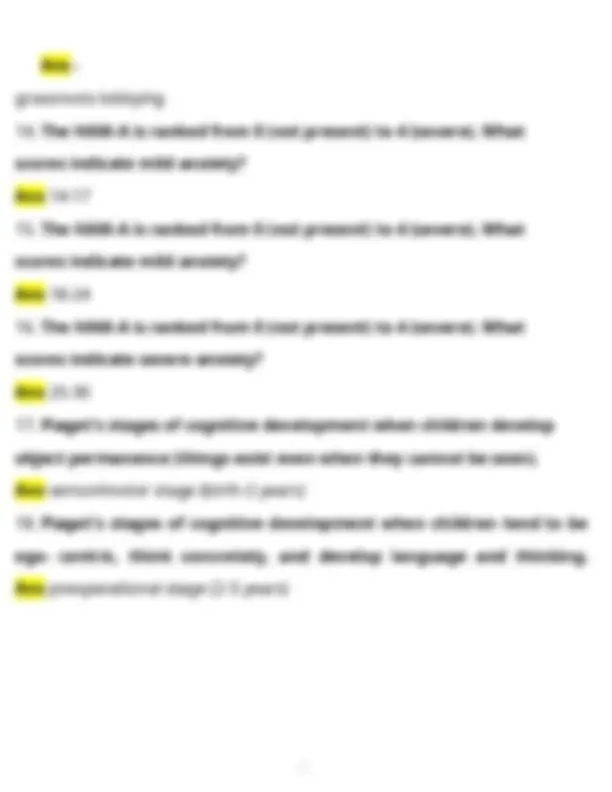
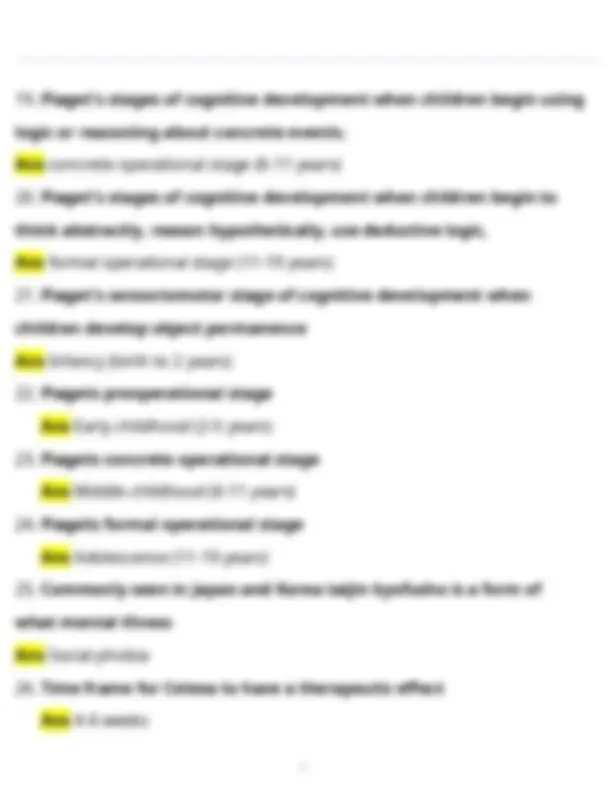
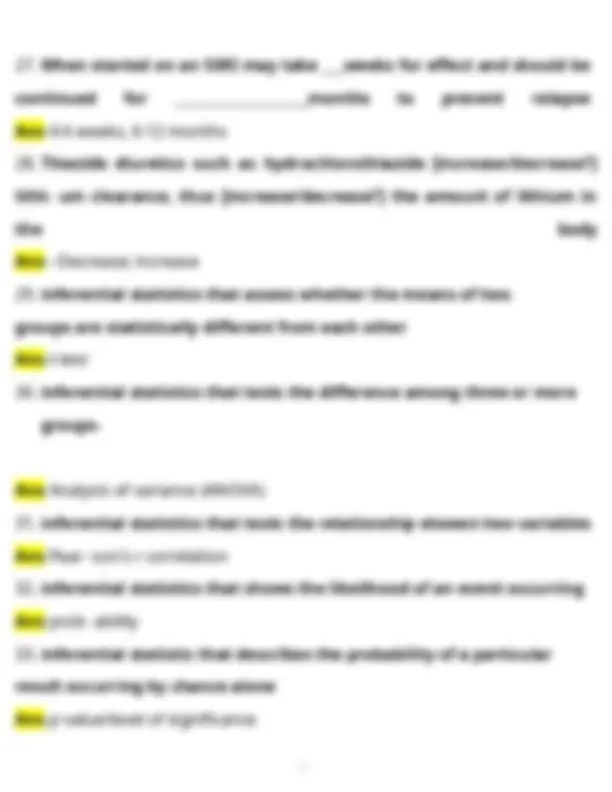

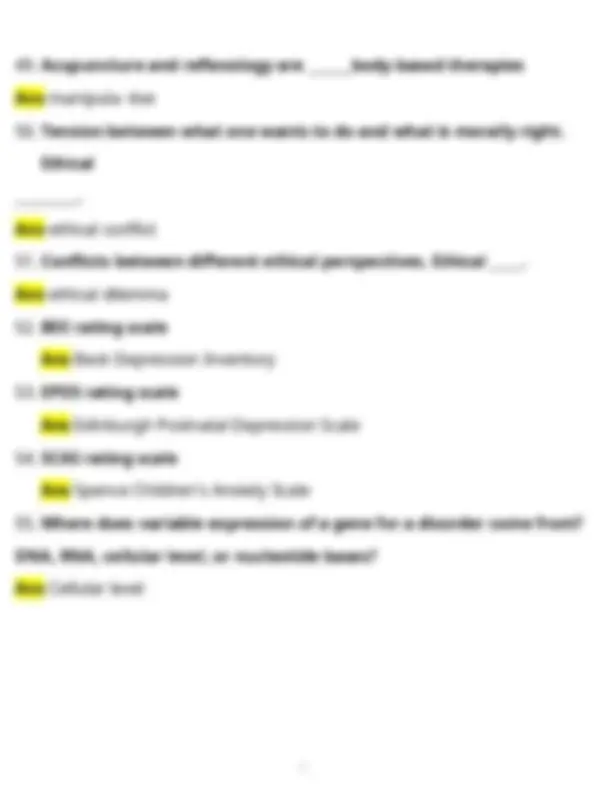
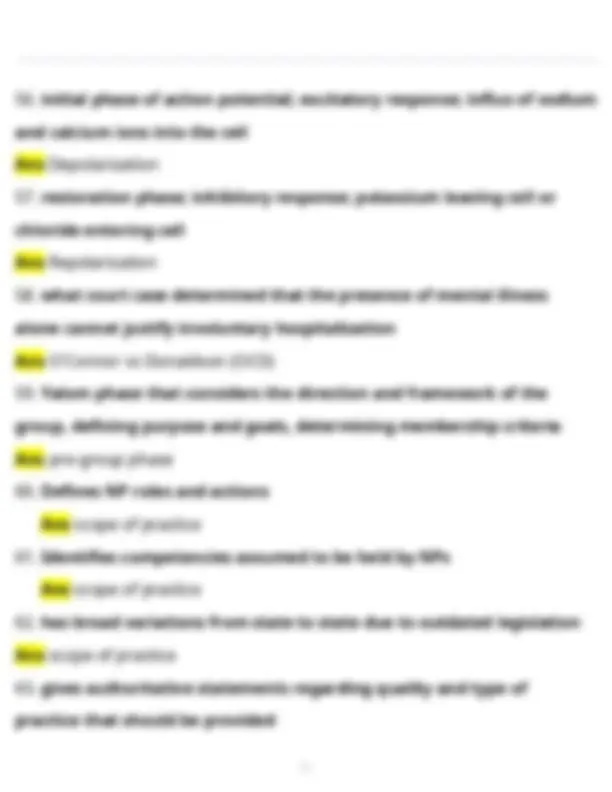
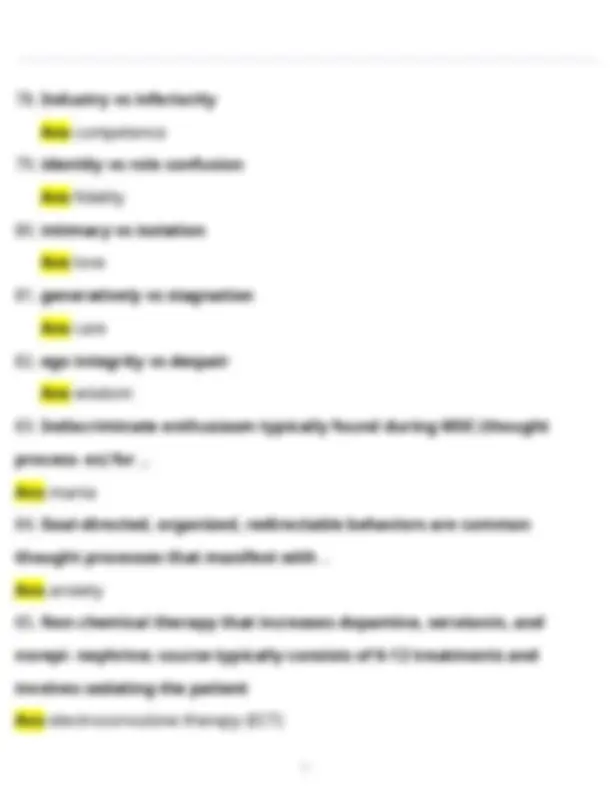
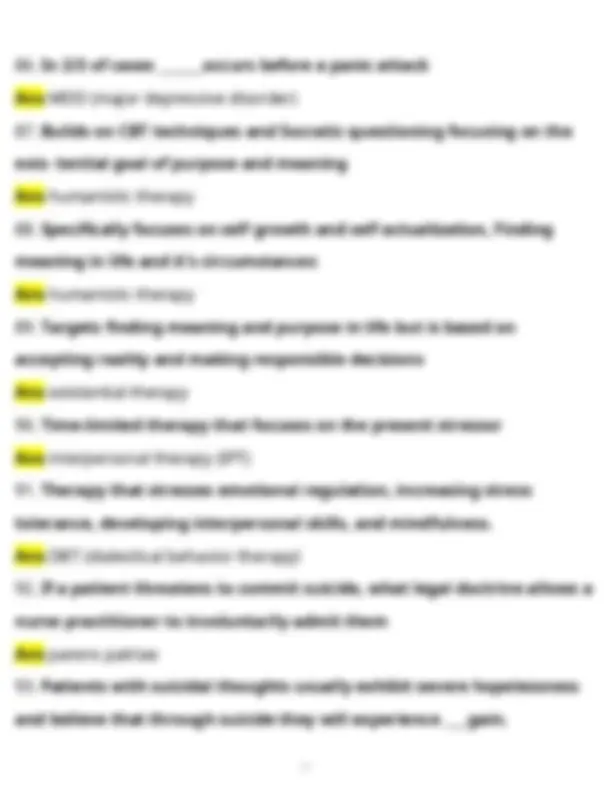
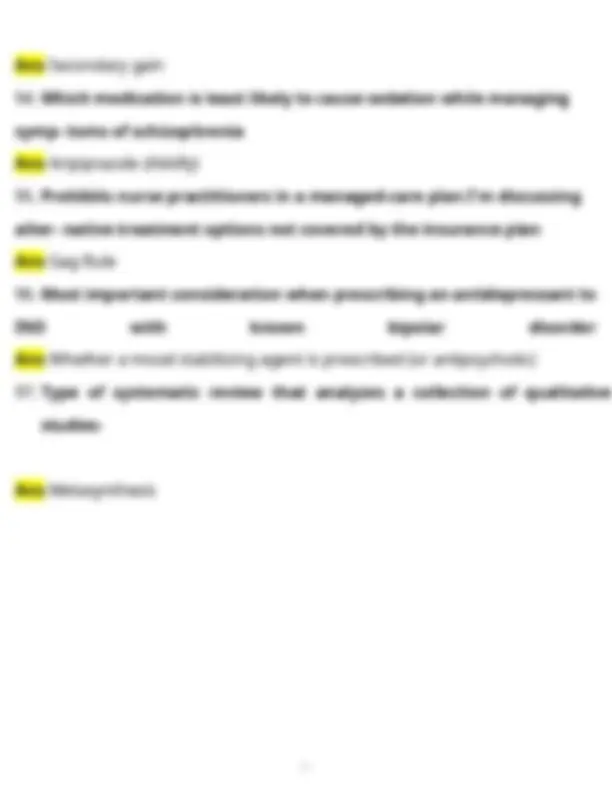


Study with the several resources on Docsity

Earn points by helping other students or get them with a premium plan


Prepare for your exams
Study with the several resources on Docsity

Earn points to download
Earn points by helping other students or get them with a premium plan
Community
Ask the community for help and clear up your study doubts
Discover the best universities in your country according to Docsity users
Free resources
Download our free guides on studying techniques, anxiety management strategies, and thesis advice from Docsity tutors
A series of questions and answers related to the ancc psychiatric mental health nurse practitioner (pmhnp) certification exam. It covers a range of topics relevant to psychiatric nursing, including nutritional deficiencies, medication dosages, family therapy techniques, mental health promotion, legislative processes, anxiety assessment scales, stages of cognitive development, and statistical concepts. The document serves as a study aid for pmhnp candidates, offering concise answers to potential exam questions and highlighting key concepts in psychiatric mental health nursing. It also touches on ethical considerations and various therapeutic modalities.
Typology: Exams
1 / 17

This page cannot be seen from the preview
Don't miss anything!










1 / ANCC PMHNP certification Exam with Questions And Answers
2 / change in family organization; uses genograms to illustrate Relationships using sym- bols for overinvolvement, conflict, and coalitions. Ans Structural family therapy
4 /
5 /
7 /
8 /
10 /
11 / Ans standards of practice
13 /
14 /
16 /
17 / concentration, N/V, parenthesis, irritability, anxiety, insomnia, crying, dizziness, vertigo Ans True